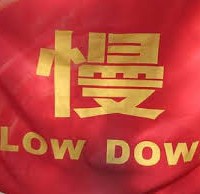
Cross-posted from Kate Mackenzie at FTAlphaville.
We’ve been pondering for a while here how China might avert or delay a full-blown financial crisis (or worse). Or, if you want to put it in a different light, how China might make its growth sustainable.
Either way, cleaning up bad debts from a bygone crisis might be a place to start. Chen Long at the INET China Economics Blog has noticed something interesting happeningwith China’s big Asset Management Companies — the four “bad banks” that were created in 1999 to buy Rmb1.4tn of distressed assets at book value from the four big state banks — equivalent to about 20 per cent of their combined loan books, or 18 per cent of China’s GDP in 1998, according to this BIS paper.
While the financing arrangement is somewhat mysterious, the AMCs issued bonds worth about Rmb840bn to the banks in exchange for the assets, with the remainder paid mostly by the Peoples’ Bank of China.
As Chen and the BIS authors note, the AMCs were apparently only intended to last for 10 years. Yet by 2009, only Rmb100bn of the Rmb800bn-plus in bond issues had been repaid to the banks, according to a PBoC official. So the bonds were rolled over.
Chen noticed that the holdings of bonds reported by the large banks began to fall sharply after 2009, having remained near their original amount for about a decade.
However, the payments have suddenly accelerated since 2009. According to the 2012 annual reports of CCB and ICBC, their holding of the AMC bonds have declined substantially. Actually CCB’s holding of Cinda bond has fallen every year since 2009, when it was rolled over.
In fact, the proportion of outstanding AMC bonds held by three of the four big banks had fallen from 94 per cent of the original amount in 2010, to just 55 per cent in 2012.
Chen writes:
This is very interesting. The AMCs were not profitable enough to pay any of the bond principals in the first 10 years so that the bonds were rolled over for another 10 years, but they suddenly started to pay large amounts right after the roll-over started.
Why did the AMCs suddenly start to pay their bond principals after 2009? Logically there are only three possibilities and let me go through them one by one.
1. They successfully recycled cash from the bad assets so that they had enough money to pay the bonds.
2. They used their retained earnings to pay the bonds.
3. Someone else helped them pay the bonds.
The financial situation of the AMCs is not very transparent but it was said that Cinda was the only AMC who was able to pay the bond interests (5.56 billion yuan per year) on time and its net profits were only 4.4 billion yuan in 2009. Therefore there is no way that Cinda can pay bond principal as much as 190 billion yuan unless it suddenly made tremendous progress in selling those bad assets. What’s more, since Huarong and Oriental could not even pay interest on time, tremendous progress would be required for Huarong to pay 140 billion in a single year.
To cut a long story short, the AMCs have not made adequate progress either on selling the assets, or on retained earnings, to explain the rapid increase in their bond payments post-2009.
That leaves the third option — someone is helping them. Chen found evidence that at least one was in fact paid by the Ministry of Finance.
In otherwords, resorting to fiscal reserves to pay out the bad debts of a crisis past.
Given that the AMCs are the legacies of the last banking crisis in China, I would be curious to know if the solution can be used again in the next one.
That’s a good question.
This was certainly not the intention when the AMCs were set up, according to the 2003 BIS paper:
Given that the transfer of NPLs is priced at book value, the government has been concerned with the potential moral hazard problem and repeatedly vowed to have no more such policy-based transfers of NPLs
Gavyn Davies looked at China’s fiscal space to address another financial crisis last week, and said it appeared the country’s government could cover bad debts equivalent to 20 per cent of GDP (similar to the amount that was “bad-banked” in 1999) by taking its public debt ratio to 100 per cent – not out of the ballpark terrible, compared to other countries. However, he points out that the rapid rise in debt ratiosmean that this must be addressed quickly.

